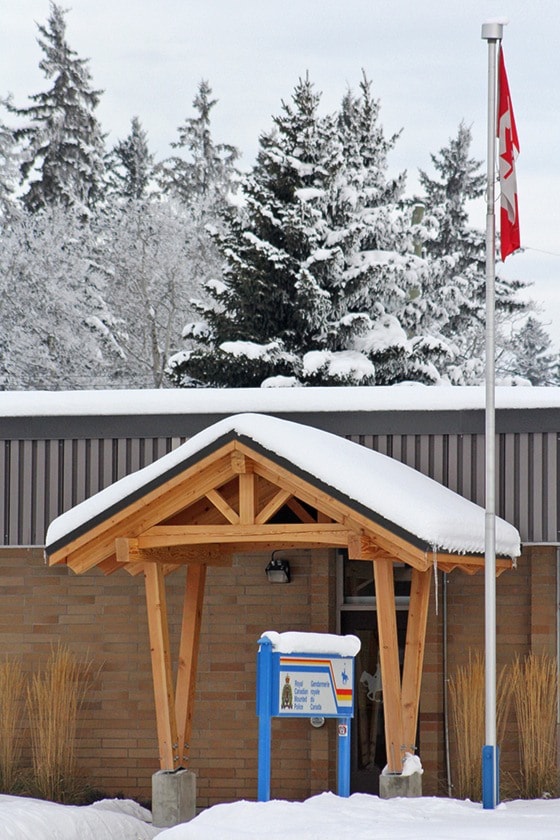Crime statistics compiled by the Vanderhoof RCMP provide insight on the efficacy of policing methods here.
In general, the number of calls for service totaled 4,040 in 2012, a 10 per cent increase since 2010, and more than Burns Lake and Fort St. James.
But the figures need to be kept in perspective, said Sergeant Jason Keays, commander of the Vanderhoof RCMP detachment.
"It doesn't mean Vanderhoof is crime ridden at all," he said.
Calls for service can range from something as harmless as a stranded motorist to a violent assault.
The increased figures partly resulted from a request by Vanderhoof council for RCMP to clamp down on liquor offenses.
In response, Keays instructed officers under his command to step up enforcement of liquor offenses, which have risen 88 per cent since 2010.
Keays has also adopted a more active roll in curbing public intoxication by patrolling streets and alleyways on a daily basis, when time permits.
"Since I'm out on the streets more, it means statistics are going to go through the roof," he said.
Crime statistics for more serious offenses either leveled off or increased slightly in 2012, though incidents of property damage continued on a downward trend, falling more than 10 per cent since 2010.
Break-and-enter offenses plateaued at 59 for a consecutive year.
Vehicle theft, a good indicator of undesirable elements moving into the community, said Keays, increased to 25 in 2012, from 16 offenses in 2011.
Assaults, encompassing anything from a bar fight, or a scuffle between teenagers, to an instance of spousal abuse, increased to 206 last year, a 22 per cent spike from 2011.
"We're up, yes," Keays said about assault offenses.
"It's concerning, but I don't think it's an alarming trend."
Keays, who was born and raised in Fort St. Nelson, and spent almost 10 years policing in the natural-gas nerve center of Dawson Creek, speaks from experience.
As both a civilian and an RCMP officer, he has seen "sleepy-hollow" towns evolve into communities troubled by the dregs of oil and gas exploration.
In Dawson Creek, Keays said resource development created a wealth of opportunities, but as projects moved forward, the population exploded, the demographics changed, crime, prostitution and drug abuse surged, and calls for service to the RCMP increased exponentially.
To bring down the crime rate, the RCMP created special task forces and nearly tripled the number of plain-clothes officers.
By the time Keays left in 2009, he was burnt out.
"The file load was unmanageable," he said.
In comparing Vanderhoof with Dawson Creek, Keays said both communities have a rich culture and an indigenous population of law-abiding, hard-working people.
"The sense of community is very strong here. That in itself deters crime," he said.
Ahead of a forecasted influx of about 500 people in the coming years, solely due to resource development projects like the Mount Milligan and Blackwater mines, Keays said Vanderhoof council has a good handle on how to manage controlled economic growth.
However, along with growth comes an increase in calls for service to the RCMP, he said.
"I've lived it, I have the previous experience and know what to expect. I can only do so much with the resources available to me."
Should Vanderhoof's population surpass 5,000, the town will inherit a substantial majority of the cost of operating the RCMP detachment, about $1-million annually, according to Deputy Administrator Tom Clement.
"It's a huge hit. We're always looking at that," he said.
By shouldering the $1 million, the town will have more input in managing the detachment's resources. Right now, the town's influence is limited.
In the past, council has expressed an interest in acquiring more RCMP officers.
Responding to a letter from Vanderhoof council about increasing policing in the community, the RCMP is auditing the Vanderhoof detachment on wether more officers are needed.
Ultimately, the final decision is up to the RCMP, said Clement.
"We're just appreciative that they're looking at it," he said.
This article was edited to reflect the following correction on Jan. 22, 2013:
In an article about 2012 crime statistics compiled by the Vanderhoof RCMP, the last name of Sergeant Jason Keays was misspelt.
